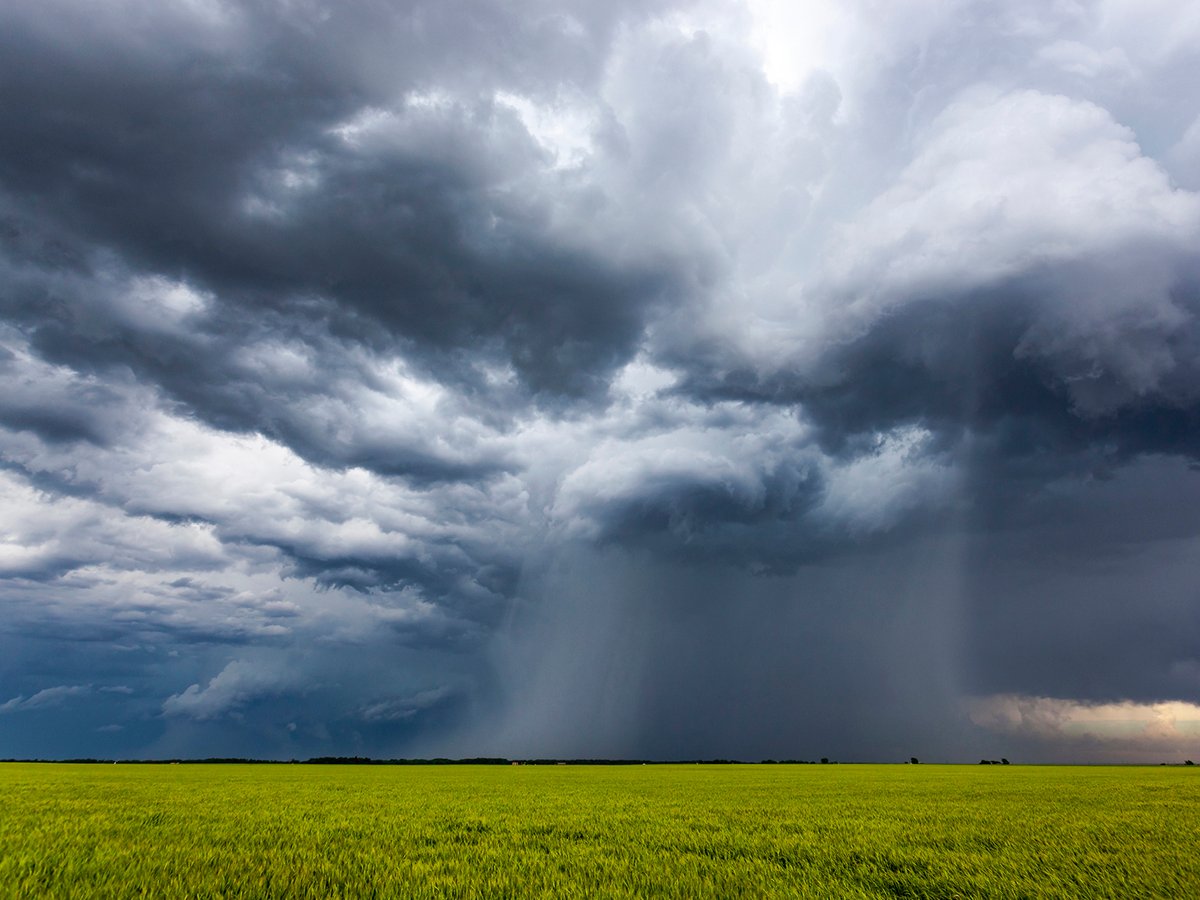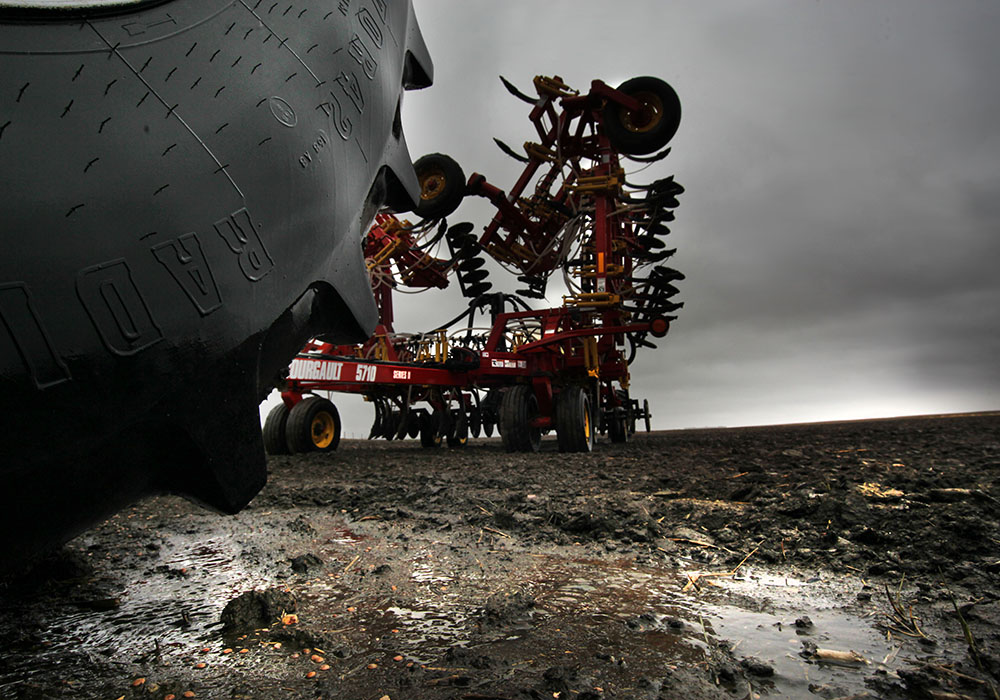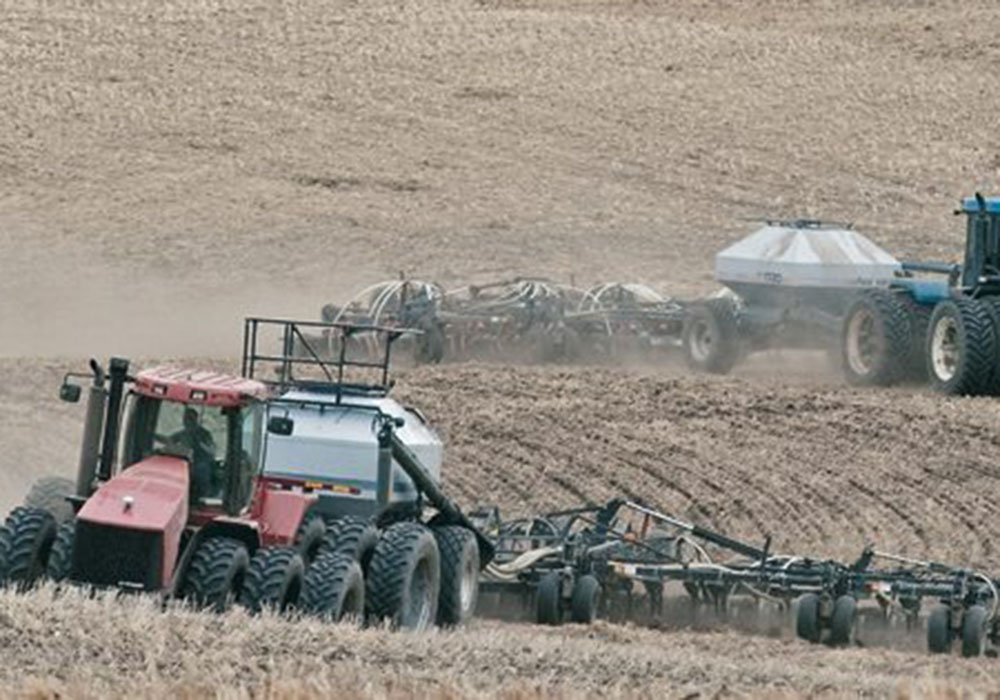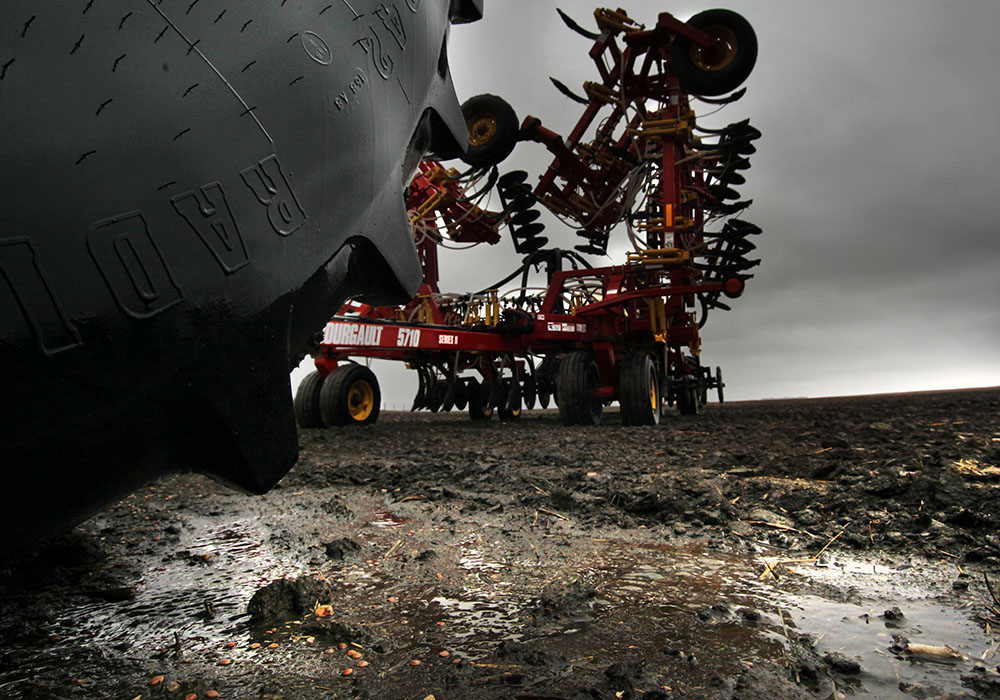WeatherFarm expands | Producers can log on to website for local weather, wind speed and direction, humidity
WeatherFarm, the densest weather monitoring network on the Prairies with more than 850 stations, continues to expand.
Spencer Smit, the company’s western network representative, said he has just completed two new installs.
The stations were placed in rural municipalities that belong to the Agricultural Producers Association of Saskatchewan, which is running a program that provides all member RMs with a weather station.
“If you’re in a RM and you want it to become a member of APAS, you should contact them, because then a Davis weather station will be installed in the RM. Then on the website, www.myrm.ca, you will get your local RM weather,” Smit said.
The solar powered weather stations provide convenient, immediate and local weather readings.
“The whole idea of the network is that it is a very dense network,” Smit said.
“Anywhere you go when you look on a map, there will be a weather station nearby. It’s based on hyper localization, so you can get your weather from right in your backyard, as opposed to another network weather station that could be 30 kilometres away.”
Read Also

Extreme rain increases as planet warms
In this issue, we are going to wrap up our look at extreme rainfall by examining the different weather patterns that tend to be associated with these rainfall events.
Monitoring stations are ideally placed in an open area where they are exposed to the prevailing winds. They then send the sensor readings wirelessly to an electronic console, which is located in the home or office, depending on the customer.
A repeater can be installed to give the signal a boost if it is interfered with by obstacles such as grain bins.
Users can access real time weather information through the console such as wind speed, wind direction, temperature, humidity, pressure, heat index and indoor temperature. The self-draining rain gauge provides precipitation readings.
“Live real time data is very useful when deciding what to spray, when to spray and how much to spray,” Smit said.
“If you farm somewhere where you don’t actually live, you can just look on the website or on your phone so you can see what the weather is out there and save yourself a trip.”
Historical data can be viewed on the console hourly, daily, monthly and yearly. It allows users to see if the temperature dropped below zero on the previous night, when the first frost came the previous year, how much rain the station received in a given month compared to the same month historically and when the wind has been picking up.
The console also sends the weather data into the WeatherFarm network, where it is stored and used to build forecasts.
The information, including current weather conditions and forecasts at each of the stations, is then offered free through the WeatherFarm web-site. Forecasts for each region are built by using information from the five closest stations.
Owners of the weather stations also have access to the historical data on the WeatherFarm database, which they can request through the website.
CWB recently sold WeatherFarm to a partnership between Glacier Media and Weather INnovations.
WIN operates several networks of weather and environmental monitoring stations in Canada, which provide data to growers, governments, academic researchers and crop insurance corporations.
It also develops and maintains crop specific weather advisory websites, including WeatherCentral.ca for grain growers in Ontario, MBpotatoes.ca for Manitoba potato farmers and sites for tomato, grape, tender fruit and sugar beet growers in Eastern Canada and Europe.
Weather information from the WeatherFarm.com network is already carried on Glacier Media’s agricultural websites, including The Western Producer.
Smit said the company is working to strengthen the network and expand the services it offers prairie farmers, such as modelling tools that will help farmers decide when to apply fungicides and pesticides.
“We are redoing the website,” he said.
“There are a lot of things we are adding. We are working on historical data. We are working on improving the radar and mapping. We are continuing to maintain the network. We have about 850 weather stations across the Prairies. Currently we are working on visiting every station and maintaining them, and getting them back online if their off line and resolving any issues.”
For more information, visit weatherfarm.com.

















